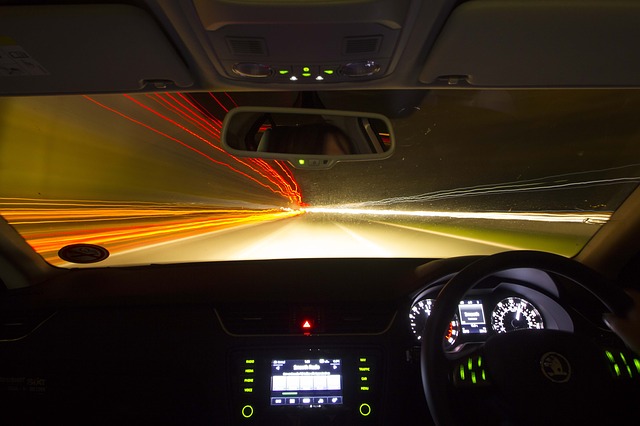Most South Africans have experienced the inconvenience of a break in power supply.
Power cuts are unfortunately going to be a reality for years to come. This has been confirmed by both the Government and the electricity supplier Eskom. The SA Chamber of Business (SACOB) has informed companies that they should be planning for the years ahead.
Attention should also be given to the impact of load shedding on road safety. We need to address load shedding and provide advice for road users on how to protect themselves from the risks posed by load shedding.
What is load shedding?
When there is not enough electricity available to meet the demand from all Eskom’s customers, it could be necessary to interrupt supply to certain areas. This is called load shedding.
Load shedding is further described as:
- The last resort measure. Only when all other options at its disposal have been exhausted, such as running its power stations at maximum capacity and interrupting supply to industrial customers with special contracts will Eskom cut supply to other customers.
- A controlled way of rotating the available electricity between all customers. Load shedding schedules are drawn up to ensure that a few areas do not bear the brunt of the shortages. By spreading the impact, affected areas are not interrupted for more than two hours at a time, and in most cases, customers can be informed of interruptions in advance.
- An effective way to avoid blackouts. Shortages on the electricity system unbalance the network, which can cause it to collapse. By rotating the load in a planned and controlled manner, the system remains stable.
Impact of load shedding on road safety
- There is not much that the average person can do about power failures affecting traffic lights and traffic flow- the correct driving attitude can, however, go a long way in preventing collisions or reducing the severity thereof.
- It is suggested, where possible, that drivers plan their routes and leave early to try and avoid the heavy traffic periods- this may also reduce the urge to rush.
- Many people are impatient because they are late due to the above-mentioned conditions and may take unnecessary risks – motorists are advised to be extra cautious at faulty traffic lights.
- Many other motorists are also stuck/delayed and may be using their cell phones and possibly not concentrating fully on the road – make sure other vehicles are stationary before you pull away from the four-way stop.
” src=”cid:[email protected]″ alt=”Traffic Lights / Intersections” width=”517.5″ border=”0″ class=”Apple-web-attachment” style=”opacity: 1;”>
Traffic Lights / Intersections
Most of the frustration on the road is caused by delays when traffic lights are out! There are a few basic tips to follow that will protect the road user and avoid frustrations:
- If traffic lights are out of order / not working etc. – the crossing becomes a stop street / [four way stop!]
- This means that you have to follow the Rules of the Road for a four-way stop
- Even if there is no traffic from the other roads -You still need to stop!
- If the vehicle in front of you crosses the intersection – you would have to allow the vehicles from the other stops to enter the crossing before you can make your move
- This means that you might have to wait for 3 other vehicles from 3 different directions to pass
- Be polite and pass swiftly whilst still cautious of possible offenders
- Be alert to the sequence of vehicles from other directions approaching the intersection
And the big NO’s
- Do not tailgate the vehicle in front of you to slip through under the radar
- Be alert to innocent mistakes – do not become a victim of road rage
- Refrain from rude gestures
Inadequate street lighting
- Power outages could remove important road safety features such as street lighting.
- This makes it extremely difficult for motorists to spot road hazards such as potholes, debris and even pedestrians on the road surface.
- Good advice would be to slow down and thus increase the time to evade these possible dangers!
- If there is no oncoming traffic it is advisable to drive with your lights on bright to increase the distance of the visible surface.
- One of the road safety slogans is “Be Visible Be Seen!”. Load shedding makes this even more important.
- Turn your vehicle’s headlights on to make yourself more visible to other road users – even during daytime
Safety from criminal elements
- Motorists must be attentive to the dangers of criminals lurking in the dark.
- During load shedding, it is possible that hijackers and “smash and grab” criminals might see an opportunity for themselves – be attentive and raise your levels of awareness!
General Info & Advice
- Ensure that your cell phone is always fully charged when power is available.
- Ensure that your vehicle (car, bakkie, motorcycle, etc) always have fuel in the tank since during power outages, petrol stations cannot pump fuel.
- Keep temporary lighting readily available, e.g. torches, candles, etc.
- Be sure to locate these items in places where they will be easy to find in the dark.
- Try to acquaint yourselves with schedules for load shedding
- There is nothing you can do to turn on the electricity – accept this and do not vent your frustrations on the roads -load shedding need not contribute towards road rage!
Conclusion:
Remember the following
- We are all annoyed with load shedding – but we also have the same objective – to arrive alive at our destinations
- You are not more important than other road users -they might also be under stress with urgent appointments to attend
- Be respectful to traffic officials and pointsmen trying to assist motorists at intersections
The Arrive Alive Road Safety Website would like to urge motorists to raise their concentration to aspects of road safety during load shedding.
Load shedding is bad enough – Let us not shed our manners as well!










